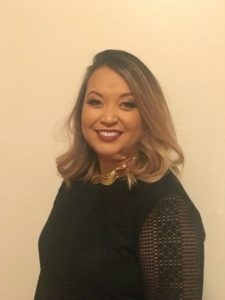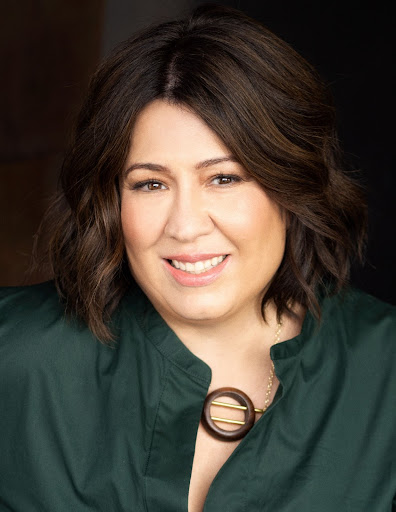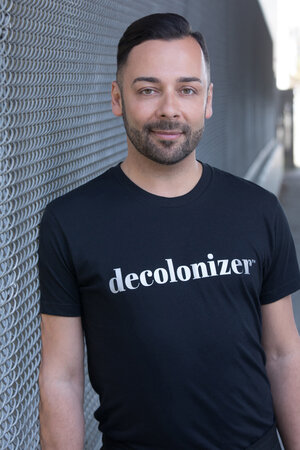< Back to all episodes
Laura Steele and Rachel Mindell
4 Trends Shaping Philanthropy in 2022
In this episode of Impact Audio, Submittable’s Laura Steele and Rachel Mindell discuss four important trends transforming the world of social impact.

4 Trends Shaping Philanthropy in 2022
Join Impact Audio producers as they discuss the ideas and people shaping philanthropy in 2022, and beyond.
Description:
Funders of all kinds have been reevaluating their work over the last few years, seeking to improve trust, transparency, and equity while reducing the burden on grantseekers. This episode of Impact Audio focuses on what comes next. Submittable’s Laura Steele and Rachel Mindell discuss four major trends moving the philanthropic sector forward.
Tune in to learn more about:
What philanthropy can do to move forward without forgetting the past
How to expand equity beyond a “checklist”
The importance of listening to community voices
Why re-centering people is vital
How technology influences philanthropy (and vice versa)
We hope you enjoy listening. And be sure to check out the full guide referenced in this episode—Moving Philanthropy Forward in 2022. Submittable asked 10 experts for insights and approaches you can put into practice today. Download the full guide.
Guests:

Laura Steele
Laura Steele is a content producer at Submittable focused on the world of grantmaking and corporate giving. Her work often explores the connection between technology, equity, and social good.

Rachel Mindell
Rachel Mindell is Special Projects Editor at Submittable. One of the highlights of her job is talking with social impact leaders about their work and learning more about how technology can help accelerate positive change.
Transcript:
Episode Notes:
Learn more:
Explore other great Submittable resources focused on accelerating social change.
Connect with the thought leaders Laura discusses and their organizations. Here are the people you hear speaking on the podcast:
Here are other experts included in Moving Philanthropy Forward in 2022:
Carrie Avery of the Durfee Foundation
Full Transcript:
Welcome to Impact Audio, the podcast where we imagine a better future for philanthropy and then we ask how to get there. I’m Rachel Mindell.
For today’s episode, I got to chat with my colleague Laura Steele. Based on extensive research and interviews, Laura has identified four key trends influencing philanthropy in 2022. You’ll hear her discuss these, as well as strategies for putting them to work. We hope you enjoy our conversation and find it useful.
RACHEL: I'm really glad that you are on Impact Audio today to talk about this really exciting guide that you put together. Maybe to get us started, would you tell our listeners about your role at Submittable?
LAURA: Sure. Yeah. So I'm a content writer and editor mostly focused on the world of grant making and corporate giving. So that means I get to dig into research projects, and writing projects, and talk to some really amazing people.
RACHEL: Perfect. So you've written a guide for Submittable called "Moving Philanthropy Forward in 2022." Can you tell me how you selected that focus?
LAURA: So I think the past couple of years in philanthropy have been a lot of looking back. And I think that retrospection has been really necessary. Philanthropy is a sector that doesn't always have great levers for accountability. And so a reckoning was really long overdue.
But I think as much value as there is in looking backward, to see how we ended up where we are, we also really need to think about how to take those insights and really put them into practice. So I wanted to make a guide that would give people really actionable advice. Here's what we learned in looking back and here's how to apply that knowledge in your work moving forward.
RACHEL: OK. So you talked to ten really interesting people with a very cool range of experience. Will you talk me through who you invited to contribute?
LAURA: Yeah. So philanthropy is big. And we really wanted to include voices from all across the sector. And so I will also say I was just really blown away by the people that I talked to. They are brilliant and generous. And they all had a really incredible ability to acknowledge problems and then turn towards solutions.
So to just run you through who those people are, we have a few people working in community foundations, so Brenda Solorzano from the Headwaters Foundation, Marcella Tillett from the Brooklyn Community Foundation, Lori Pourier from First Peoples Fund, and Carrie Avery from the Durfee Foundation.
We also have two scholars and authors who focused their research and work on the philanthropic sector, Lucy Bernholz from Stanford Center on Philanthropy and Civil Society and David Callahan who's the founder of Inside Philanthropy.
I talked to two consultants who work with nonprofits, in particular around infrastructure and technology. Chris Hobbs of Arabella Advisors and Jim Fruchterman of Tech Matters. And then two nonprofit leaders, Amy Sample Ward of NTEN and Jennifer Mizrahi from Respectability.
RACHEL: What an incredible list. What surprised you most about what you learned during these interviews?
LAURA: So for me it was the wide range of advice. There are some really unique takes on how to shift our current approaches. But if you step back, a lot of the advice is really moving in the same direction.
So everyone wants philanthropy to do better. To make a bigger impact. To reach more people. To be more equitable and inclusive. So I think there's a consensus on what needs to improve but these experts all had a distinct perspective on what it will take to get there.
And I'll just mention too that the insights I heard, they're not at odds with each other. So it's not about picking one over the other. There's not really a single solution that's going to fix everything all at once. But I was excited by how all the different pieces fit together.
So I think it's more about finding what makes sense for you and your team, if you're looking to dig into this work. And I think that could look like changing your grant application process, or rethinking how you set your priorities as an organization, strengthening relationships within your community, or even investing in new technology. So basically, there's a lot of doors that lead to the same place.
RACHEL: Absolutely. I want to encourage people to dig into this guide for the specifics. But would you mind sharing a few quick takeaways with us?
LAURA: First and foremost, there's a really big push toward true equity. So over the last couple of years a lot of organizations have really taken a long, hard look in the mirror and realized that there is a lot of inequity built into how they do things.
And we all saw how many companies made pledges around diversity and inclusion in 2020 and 2021. And that was a really important step but now is really the time to follow through.
So equity is not about looking like a diverse organization from the outside, it's really about incorporating a wide range of voices into the conversation and shifting the decision-making power to those who have been historically left out.
So as a great example, Brenda Solorzano from the Headwaters Foundation talked about equity being a practice more than a destination. She says,
BRENDA SOLORZANO: Unfortunately in our field people want the quick checklist. Give me the three things I need to do to become more equity centered. It doesn’t work that way. There’s not a checklist. It starts with a values-driven approach that you’re going to look at everything you do and determine whether or not you’re taking an equitable approach. And then really looking at where that power is. And how are you going to share that power or cede that power?
RACHEL: That makes so much sense. Real change and work that matters is never static.
LAURA: Exactly. And there's also been a recognition that philanthropy in some ways has gotten too far away from the communities being served. And when philanthropy becomes too insular, it doesn't reflect the reality experienced by people on the ground.
So in turn you have these foundation leaders who are trying to build solutions but they don't always understand the full scope of the problems they're trying to solve. So a lot of the experts I spoke to talk about how to narrow that gap between funder and grantee, so that nonprofits are really staying rooted in the community members' lived experiences.
So for example, Marcella Tillett of Brooklyn Community Foundation discussed the team's approach of centering community voices in their work.
MARCELLA TILLETT: The way we approach that at Brooklyn Community Foundation always starts with listening, it always starts with engaging in co-created space with community members and community organizations that we partner with. And that helps us set the tone for who we are, what we value, how we approach partnership, and open up space for other people to enter into that. And invite us into their space, which is also really important.
RACHEL: I love that. Listening is at the heart of every kind of relationship, isn't it? Was that cheesy? I don't care, I guess.
LAURA: That's totally cheesy, but it's also true. And speaking of relationships, I noticed a really big focus on people. I think across philanthropy there's been a recognition that a lot of the processes that are in place to manage workflows and connect funders with grantees have become in some ways barriers themselves.
So I know these processes were originally developed to serve people and to make the work itself easier but too often the opposite has become true. So the processes themselves are prioritized over people and so you get a lot of red tape and bureaucracy around decisions of who gets funding and then who doesn't.
RACHEL: I feel like we have to think about that a lot at Submittable because we've become so involved in these processes. The technology used either serves people or it serves technology, if that makes sense. If we're complicating the application process for example, we're not thinking about the end users.
LAURA: Totally. Many of the people I talked to shared strategies on how to re-center people in the work. And that's what they said. It's about looking at all of your decision-making processes and ensuring that the structures that have been built, really serve the community and not the other way around.
Lucy Bernholz, a senior research scholar at Stanford, actually talked to me about how to close that gap.
LUCY BERNHOLZ: What you need to do is go listen and go engage. Literally physically, humanly, you have to be there in a way that will build some legitimacy for you in those communities. Now that may not mean you Bill Gates or you Oprah, it may mean people on your behalf, But you have to go there recognizing that you have a set of tools, but the way you’ve organized them they’re not useful. The money could be useful at the end of the day, but everything you’ve probably built to make people get it, not useful, not useful, probably harmful. The first thing you have to do is get close and listen.
RACHEL: Wow. These are such great human suggestions. Is there anything else you want to highlight?
LAURA: All right. So the last trend I'll mention that you brought up already is the shifting role of technology. So as a whole I think funders have been a little hesitant to adopt or fund new tech solutions even when we know that it really improves outcomes. But in this day and age, as everyone knows, you can't do much about technology. And philanthropy is finally understanding that.
So Amy Sample Ward of NTEN told me that being successful with technology is about how you frame your relationship with tech and not what you have and how much you have to spend.
AMY SAMPLE WARD: The size of your budget does not determine whether you will be successful with technology, the number of staff you have does not determine if you will be effective. The practices that we see the closest correlation between: you do this and you’re more effective are things any single organization can do. Those are things like technology is budgeted for intentionally–it’s not in one big bucket with coffee and markers and post-it notes. It has its own section in the budget so you can make deliberate decisions and evaluate how that money was spent. Somebody that has tech management responsibility is considered part of your leadership team. You are able to articulate technology in your strategic plan–these are things anybody can do. These are just the way you approach technology, but those are some of the things we see the highest relationship to effectiveness.
RACHEL: I really like that a lot. And a lot of the ideas that you're talking about remind me of some of the topics we've covered in season one of Impact Audio, especially the episode with Chantal Forster talking about the place of technology and philanthropy.
LAURA: Ah, so you're still looking back. So we want to try to look forward now. No, I'm just kidding. Season one was great. We had some great episodes that really tackled some of these issues. And I'm excited that season two is really focused now on how we put this stuff in practice and taking the stuff from season one and running with it.
RACHEL: Good call, Laura. Yes. Let us charge ahead. Thank you so much for sharing this time with me and these insights. It's been great.
LAURA: Thank you. And yeah, big shout out to all the experts who sat down with me over the past few weeks and shared their insights and were so generous with their time.
Thank you, listener, for joining us today. We hope you’ll check out the full guide on moving philanthropy forward in 2022 using the link in our episode notes. Impact Audio is edited and produced by Jordan Marvin, Laura Steele, and yours truly. Submittable is a cloud-based social impact platform designed to help your team make better decisions and have a bigger impact. We’d love to partner with you to maximize social good and create lasting change through smarter technology—find out more at Submittable.com. And until next time, take good care.
Additional Resources
Season 2 , Episode 2| 15 Min
Advancing DEI Day to Day: From Why to How with WarnerMedia

Grace Moss

Sophia Zeinu

Yvette Urbina
Season 1 , Episode 5| 59 Min
Edgar Villanueva and Sam Caplan: How Can Philanthropy Decolonize Wealth?

Edgar Villanueva

Sam Caplan
Season 2 , Episode 1| 29 Min
From Evolution to Revolution: How Grants Managers Can Remake Philanthropy

Rachel Kimber

Adam Liebling

Sam Caplan








